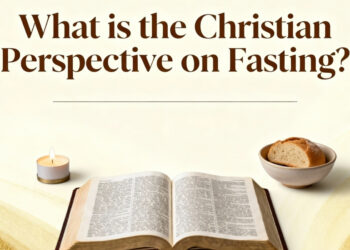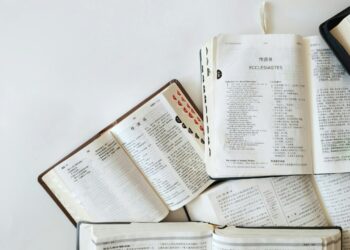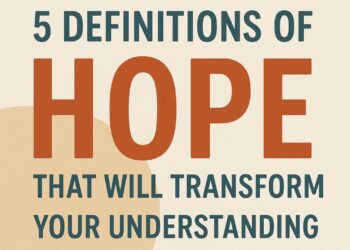No products in the cart.
7 Ways How Do Christians Celebrate Christmas
This post contains paid and/or affiliate links. I make a small commission at no extra cost to you. Please see our Privacy Policy.
Christmas is a special time for Christians around the world. It celebrates the birth of Jesus Christ. Here are seven meaningful ways Christians Celebrate Christmas, bringing families and communities together.
1. Attending Church Services
Attending church services is a key part of Christmas for Christians. On Christmas Eve and Day, churches hold special services. These include songs, prayers, and scripture readings.

These services remind believers of the true meaning of Christmas. It’s the birth of their Savior.
2. Singing Christmas Carols
Singing Christmas carols is a beloved tradition. Communities come together to sing hymns about Jesus’ birth. These songs bring joy and unity, spreading the Christmas spirit.
3. Setting Up Nativity Scenes
Another way to commemorate Christmas is to set up nativity scenes. These displays show the birth of Jesus and feature Mary, Joseph, and the shepherds.
Nativity scenes remind us of the Christmas story. They encourage reflection on its significance.
4. Advent Celebrations
The Advent season is important for many Christians. Families light candles on an Advent wreath and read scriptures. They also pray together.
Advent encourages anticipation of Jesus’ birth each week. Families share traditions to build excitement and focus on the holiday’s religious significance.
5. Giving to Those in Need
Christmas is a time for generosity. Many Christians give to those in need. They volunteer or donate to charities.
This can include providing food, clothing, or gifts. By doing so, they reflect the love of Christ and make the season brighter for everyone.
6. Family Gatherings and Feasts
Christmas is synonymous with family gatherings. Christians celebrate by hosting or attending festive meals. Traditional dishes vary by culture but often include roasted meats and desserts.
These gatherings nourish the body and spirit. Families share stories and create lasting memories together.

7. Exchanging Gifts
Gift-giving is a cherished custom during Christmas. Christians exchange presents as a symbol of love and generosity, mirroring the ultimate gift of Jesus’ life.
It fosters a sense of community. It expresses feelings of gratitude and love among family and friends.
| Way to Celebrate | Description |
|---|---|
| Attending Church Services | Special services filled with prayers, hymns, and scripture readings. |
| Singing Christmas Carols | Communities come together to sing songs of joy about Jesus’ birth. |
| Setting Up Nativity Scenes | Displays that showcase the birth of Jesus and encourage reflection. |
| Advent Celebrations | Lighting candles and engaging in prayers leading up to Christmas. |
| Giving to Those in Need | Volunteering and donating to spread joy to those who are less fortunate. |
| Family Gatherings and Feasts | Festive meals shared with loved ones to create special memories. |
| Exchanging Gifts | Gifts are exchanged as a symbol of love and generosity. |
These seven ways show how Christians reverence and joyously celebrate Christmas. Eachcts the love and light of the season and tradition reflects a sense of community and connection that lasts beyond the holiday.
By participating in these practices, Christians commemorate Jesus‘ birth and share His love and hope with the world.
The Significance of Advent in Christian Traditions
Advent is a special time for Christians worldwide, marking the start of the liturgical calendar. It’s filled with traditions that make the journey to Christmas richer. Advent begins four Sundays before Christmas, a time to prepare for Jesus’s birth. It invites believers to reflect, pray, and grow closer to God.
Understanding the Purpose of Advent
Advent is more than just counting down to Christmas. It has deep spiritual meaning. This season has a few key purposes:
- Preparation: It’s a time to get ready for Christ’s birth.
- Reflection: It encourages self-reflection and penitence, preparing for spiritual renewal.
- Hope: Advent brings hope and anticipation for Christ’s Second Coming, reminding of salvation’s promise.
The Advent Wreath: A Symbol of Hope
The Advent wreath is a cherished tradition. It’s made of evergreen branches, symbolizing eternal life. The wreath has four candles, each for a week of Advent, with a fifth for Christmas Eve or Day.
Candle Meanings
Each candle has its own meaning:
| Candle | Week | Meaning |
|---|---|---|
| Purple | First | Hope (Prophecy Candle) |
| Purple | Second | Peace (Bethlehem Candle) |
| Pink | Third | Joy (Shepherds Candle) |
| Purple | Fourth | Love (Angel Candle) |
| White | Christ | Celebration of Christ’s Birth |
Advent Calendars: A Fun Countdown
Advent calendars are another popular tradition. They’re a fun way to count down to Christmas. Each day, a door opens to reveal a gift, chocolate, or scripture. This makes the wait exciting.
Daily Devotion and Scripture Reading
Many Christians use Advent for daily devotionals. Reading Bible passages about Jesus’s birth deepens understanding of Christmas. These readings spark conversations, building anticipation together.
Sample Daily Readings
- Isaiah 9:2-7 – The prophecy of the coming Messiah.
- Luke 1:26-38 – The Annunciation to Mary.
- Matthew 1:18-25 – The birth of Jesus foretold.
- Luke 2:1-20 – The nativity story.
Community Worship Services
Advent brings Christians together for special services. These include caroling, prayer, and candlelight services. They focus on hope, peace, joy, and love, strengthening church bonds.
Acts of Kindness and Charity
Advent is also a time for kindness and charity. Churches and organizations encourage giving back. This reflects Christ’s spirit, encouraging believers to share their blessings.
Advent is a meaningful time for Christians, preparing for Christ’s arrival. Through traditions, prayers, scriptures, and service, it enriches faith and fosters hope. By participating, you can deeply connect with Jesus’s birth story.
Exploring Unique Christmas Customs Around the World
Christmas is celebrated all over the world, but each culture has its own special way of celebrating. If you’re curious about how different countries celebrate, here are some interesting customs from around the globe.
1. Japan: KFC Christmas Dinner
In Japan, Christmas isn’t a national holiday, but it’s still a big deal. A unique tradition is eating Kentucky Fried Chicken on Christmas. Families often order chicken weeks in advance. This started in the 1970s with a KFC marketing campaign that made fried chicken a Christmas favorite.
2. Mexico: Las Posadas
Mexico’s Christmas celebrations include a nine-night event called Las Posadas. It tells the story of Mary and Joseph’s search for shelter. People dress up and go from house to house, singing carols, until they find a welcoming home.
3. Italy: La Befana
In Italy, kids look forward to La Befana, a kind witch, instead of Santa Claus. On January 5th, she brings gifts and sweets. She’s said to arrive on her broom, spreading joy to children. The festivities end with the Feast of Epiphany, celebrating the Three Wise Men.
4. Sweden: Advent and Saint Lucia’s Day
Sweden’s Christmas season starts with Advent celebrations. They light candles and enjoy festive foods. Saint Lucia’s Day on December 13th is a highlight, where girls wear white gowns and crowns of candles. They sing traditional songs and share saffron buns.
5. Philippines: Giant Lantern Festival
The Philippines has one of the longest Christmas seasons, starting in September and ending in January. The Giant Lantern Festival in San Fernando is a key event. Contestants create huge lanterns made of paper, bamboo, and lights. It’s a stunning display that symbolizes the Star of Bethlehem.

6. Norway: Hiding the Broom
In Norway, witches and evil spirits are believed to come out on Christmas Eve. To keep their brooms safe, families hide them before the celebrations. This fun custom adds a playful touch to the holiday. Families then enjoy traditional foods like ribbe (pork belly) and riskrem (rice pudding).
7. Ethiopia: Christmas Feast
Christmas in Ethiopia, known as Genna, is celebrated on January 7th. People fast until the feast starts, usually late in the day. They wear traditional white garments called netela and attend a long church service. Then, families gather for a feast with doro wat (spicy chicken stew) and injera (flatbread).
| Country | Unique Custom | Date |
|---|---|---|
| Japan | KFC Christmas Dinner | December 25th |
| Mexico | Las Posadas | December 16th-24th |
| Italy | La Befana | January 5th |
| Sweden | Saint Lucia’s Day | December 13th |
| Philippines | Giant Lantern Festival | December 16th |
| Norway | Hiding the Broom | December 24th |
| Ethiopia | Genna Christmas Feast | January 7th |
Christmas celebrations around the world show how different cultures add their own twist to the holiday. Despite the unique ways people celebrate, joy, family, and togetherness are common themes. These values bring people closer during the festive season.
The Role of Church Services in Christmas Celebrations
Church services are key for many Christians during Christmas. They are more than events; they are meaningful experiences. They help people remember the birth of Jesus Christ.
Worship and Praise
Christmas church services focus on worship and praise. They include traditional carols and songs that celebrate Jesus. This fosters a sense of community as people come together to celebrate.
The music can be contemporary or traditional. This variety caters to different tastes and preferences.
Christmas Eve Services
Christmas Eve services are a highlight for many churches. These services may include:
- Candlelight Services: This experience symbolizes the light of Christ coming into the world.
- Nativity Plays: Churches perform plays that tell the story of Jesus’ birth, engaging children and adults alike.
- Communion: Participating in communion on Christmas Eve helps believers reflect on Christ’s sacrifice.
Community Engagement
Church services during Christmas encourage community involvement. Many congregations organize outreach programs to help those in need, such as:
- Food Drives: Churches collect food to distribute to local shelters or families in need.
- Gift Donations: Many congregations participate in toy drives or provide gifts for underprivileged children.
- Volunteering Opportunities: Service projects foster a spirit of giving and compassion.
Teaching and Reflection
Church services during Christmas focus on teaching and reflection. Sermons often cover key themes, including:
- Hope: Reflecting on the hope that Jesus’ birth brings to the world.
- Love: Emphasizing God’s unconditional love shown through Jesus’ birth.
- Faith: Encouraging faith in God’s promises and His presence in difficult times.
Special Decorations and Atmosphere
The ambiance of Christmas church services is enhanced by decorations. Common elements include:
- Christmas Trees: Decorated trees symbolize life and hope.
- Nativity Scenes: Displaying nativity scenes tells the story of Jesus’ birth, engaging all ages.
- Lighting: Soft lighting and candles create a warm and inviting atmosphere.
Children’s Programs
Children’s programs are vital in Christmas church services. They may feature:
- Children’s Choirs: Kids sing Christmas carols, engaging them in worship.
- Storytime: Storytelling sessions captivate young minds with the story of Jesus’ birth.
- Craft Activities: Arts and crafts, like making ornaments, reinforce the Christmas spirit and offer a creative outlet.
Fellowship and Connection
Christmas church services are great for fellowship. People often meet after services for:
- Potluck Meals: Sharing food helps people connect and build community.
- Social Activities: Events like game nights or holiday parties help make friends.
- Prayer Groups: Praying together strengthens spiritual bonds and offers support.
Church services at Christmas are more than just tradition. They show the values of hope, love, and community. These gatherings make Christmas special for many Christians. They bring people together in worship, reflection, and service, showing the true spirit of Christmas.
How Christmas Symbols Reflect Christian Beliefs
Christmas is filled with symbols that show deep Christian beliefs. Each symbol carries its own meaning, showing faith, hope, and love. Let’s look at these symbols and how they connect with Christian teachings.
The Star
The star is a key Christmas symbol. It’s the Star of Bethlehem, guiding the Wise Men to Jesus. This star means guidance, hope, and the fulfillment of prophecy.
- Symbol of Guidance: The star guides the Magi, just as faith guides Christians.
- Hope and Light: It represents the light of Christ, showing the way to salvation.
The Nativity Scene
The nativity scene shows Jesus’ birth in a stable. It’s surrounded by Mary, Joseph, shepherds, and the Wise Men. This scene is very meaningful for Christians, showing God becoming human.
- Humility: Jesus’ birth in a stable teaches the value of humility.
- Unity: The nativity scene brings people together, showing inclusiveness.

The Christmas Tree
The Christmas tree is a favorite tradition, decorated with lights and ornaments. It has roots in pre-Christian celebrations but now holds Christian meaning.
- Eternal Life: The evergreen tree symbolizes eternal life through Christ’s resurrection.
- Hope: The decorations bring joy and hope for Christ’s coming.
The Candy Cane
The candy cane started as a simple white stick but now represents many Christian themes, especially at Christmas.
- Shepherd’s Crook: Its shape is like a shepherd’s crook, showing Jesus as the Good Shepherd.
- Red and White: The red stripes are for Christ’s blood, and the white for His purity.
The Angels
Angels are key in the Christmas story, announcing Jesus’ birth to the shepherds. They connect heaven and earth.
- Messengers: Angels remind Christians of God’s communication and guidance.
- Heralds of Joy: Their announcement of Jesus’ birth brings joy and peace to all.
The Wreath
The Christmas wreath, often on doors, is circular, symbolizing God’s eternal love.
- Infinite Love: The circle shows God’s endless love and mercy.
- Symbol of Christ: Wreaths can have four candles for Advent, marking Christ’s coming.
The Bells
Bells are very important during Christmas. They are used in church services and Christmas carols.
- Heralding Good News: Bells signal joy, much like the announcement of Jesus’ birth.
- Call to Unity: They remind Christians to come together in worship and celebration of the Savior’s birth.
Christmas symbols show the deep meaning of the holiday. Each symbol carries messages of love, hope, and redemption. Whether it’s a wreath or a nativity scene, these symbols add to our faith during Christmas.
Conclusion
Christmas is a special time for Christians all over the world. It’s filled with rich traditions and meaningful practices. These honor the birth of Jesus Christ.
Each way Christians celebrate Christmas shows their deep faith and community spirit. Whether it’s through Advent, church services, or exploring unique customs, it’s all about faith.
Advent marks the start of this holy season. It’s a time of preparation and reflection. This period builds excitement and focuses on Jesus’s arrival as a gift to humanity.
Advent traditions, like lighting candles and daily readings, create a heartfelt connection. They help us connect to this significant moment in history.
Church services are key in Christmas celebrations. They unite congregations in worship and praise. These gatherings let us sing hymns, listen to sermons, and celebrate community.
Church services reinforce the message of hope and love that Christmas brings. They remind us of the joy of being together.
Christmas symbols, like the nativity scene and Christmas trees, carry deep meanings. They echo core Christian beliefs about faith, hope, and charity. These symbols remind us of the shared values that unite believers.
As you reflect on these traditions and meanings, remember Christmas is more than a celebration. It’s a heartfelt acknowledgment of faith and community. Embracing these practices enriches our understanding and appreciation of this joyous season.
It draws us closer to the heart of Christmas and its timeless message. Christmas is a moment in history that touches our hearts and brings us together.
FAQs
What is the true meaning of Christmas for Christians?
Christmas celebrates the birth of Jesus Christ, symbolizing hope, salvation, and God’s love for humanity.
Why do Christians attend church services during Christmas?
Church services help Christians reflect on the birth of Jesus through prayers, hymns, scripture readings, and communion, fostering spiritual growth and community connection.
What is the purpose of singing Christmas carols?
Christmas carols celebrate Jesus’ birth and spread joy. They unite communities through music and the shared expression of faith.
What is the significance of nativity scenes?
Nativity scenes depict the story of Jesus’ birth, reminding Christians of the humility and significance of the event.
What is Advent, and why is it important?
Advent is the four-week period leading up to Christmas, a time for Christians to prepare spiritually for Jesus’ birth through reflection, prayer, and scripture reading.
Why do Christians exchange gifts at Christmas?
Gift-giving symbolizes love and generosity, reflecting the ultimate gift of Jesus Christ to the world.
How do acts of charity reflect the spirit of Christmas?
Acts of charity, like helping those in need, embody the teachings of Jesus and highlight the values of love, compassion, and generosity.
What role does the Christmas tree play in Christian celebrations?
The evergreen Christmas tree symbolizes eternal life through Christ, with its decorations representing hope and joy.
How do different cultures celebrate Christmas in unique ways?
Cultural customs, such as Japan’s KFC tradition or Mexico’s Las Posadas, showcase the global diversity of Christmas celebrations while maintaining its core themes of joy and togetherness.
What do the candles on the Advent wreath represent?
Each candle on the Advent wreath symbolizes a theme: hope, peace, joy, and love, culminating in the celebration of Christ’s birth.













